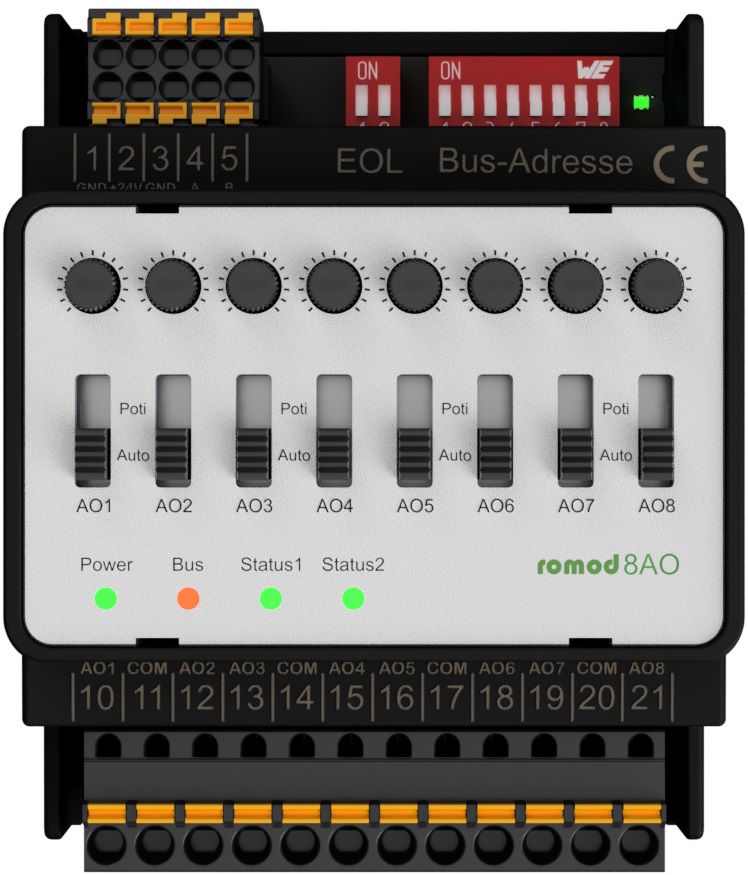romod 8 AO- 8 AO Railmodul
8x 0-100%, 8x A-H
The analog output module Romod 8AO is a Local Override/Indication Device (LO/ID) which is used to provide eight 0-10V control signals. These may be utilized, e.g., for controlling heating valves, dampers or frequency converters etc. By means of the integrated switches and potentiometers, it provides the ability of manual override of the AOs which are usually controlled via MODBus commands.
Article Group: 0310Article Number: 00002932The analog output module romod 8 AO is a Local Override/Indication Device (LO/ID) which is used to provide eight 0-10V control signals. These may be utilized, e.g., for controlling heating valves, dampers or frequency converters etc. By means of the integrated switches and potentiometers, it provides the ability of manual override of the AOs which are usually controlled via MODBus commands. The analog 0-10V outputs are provided by the module via terminals. The reference potential for the analog outputs is available at the GND terminals. For two AOs there is available one GND terminal in each case. All ground pins are connected to each other internally and to the GND of the power supply, as well. The current positions of the switches ('Auto' or 'potentiometer') can be read from a register. Likewise, the potentiometers' positions can be polled from registers. There is a register that displays whether and which switch has been operated since the last time this register has been read. When reading this register, all bits are reset to zero. If the position of a switch has been altered several times, e.g. from AUTO to POT and back to AUTO, a change will be displayed, anyway. Also changes in the values of the potentiometers can be seen from a register. That register shows which potentiometer has been moved since the last time this register has been read. The corresponding analog value then can be polled specifically. Doing so, the bus cycle time may be reduced significantly. All analog outputs can be configured so that they will assume a defined state ('safe state') if the module has not received valid bus telegrams via the Modbus for a certain time. These predefined states are set separately for each output, whereas the time until activating the safe state is common for all outputs of a module. Note: The time for triggering the 'safe state' should not be too short in order to avoid malfunctions as they can occur, e.g., when another device which is connected to the bus fails and will so cause time-outs. Regarding the system configuration (addressing, maximum number of modules connected to a MODBus Master interface, installation, connection to the bus etc.), please follow the instructions in the chapter Configuration.
|
Datasheets |


